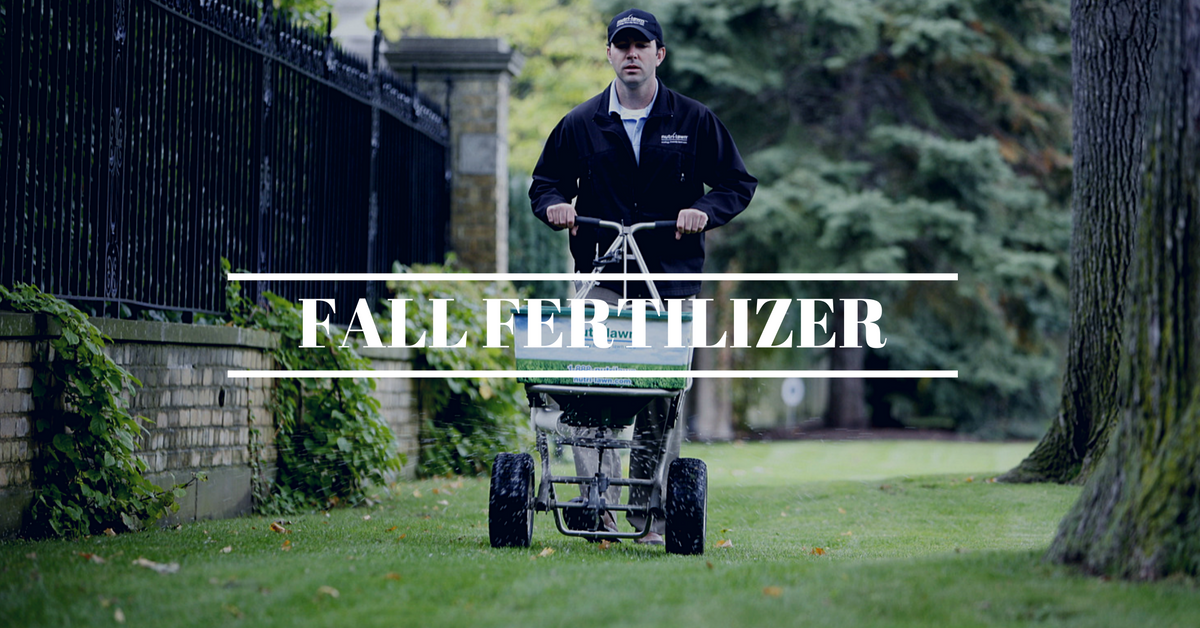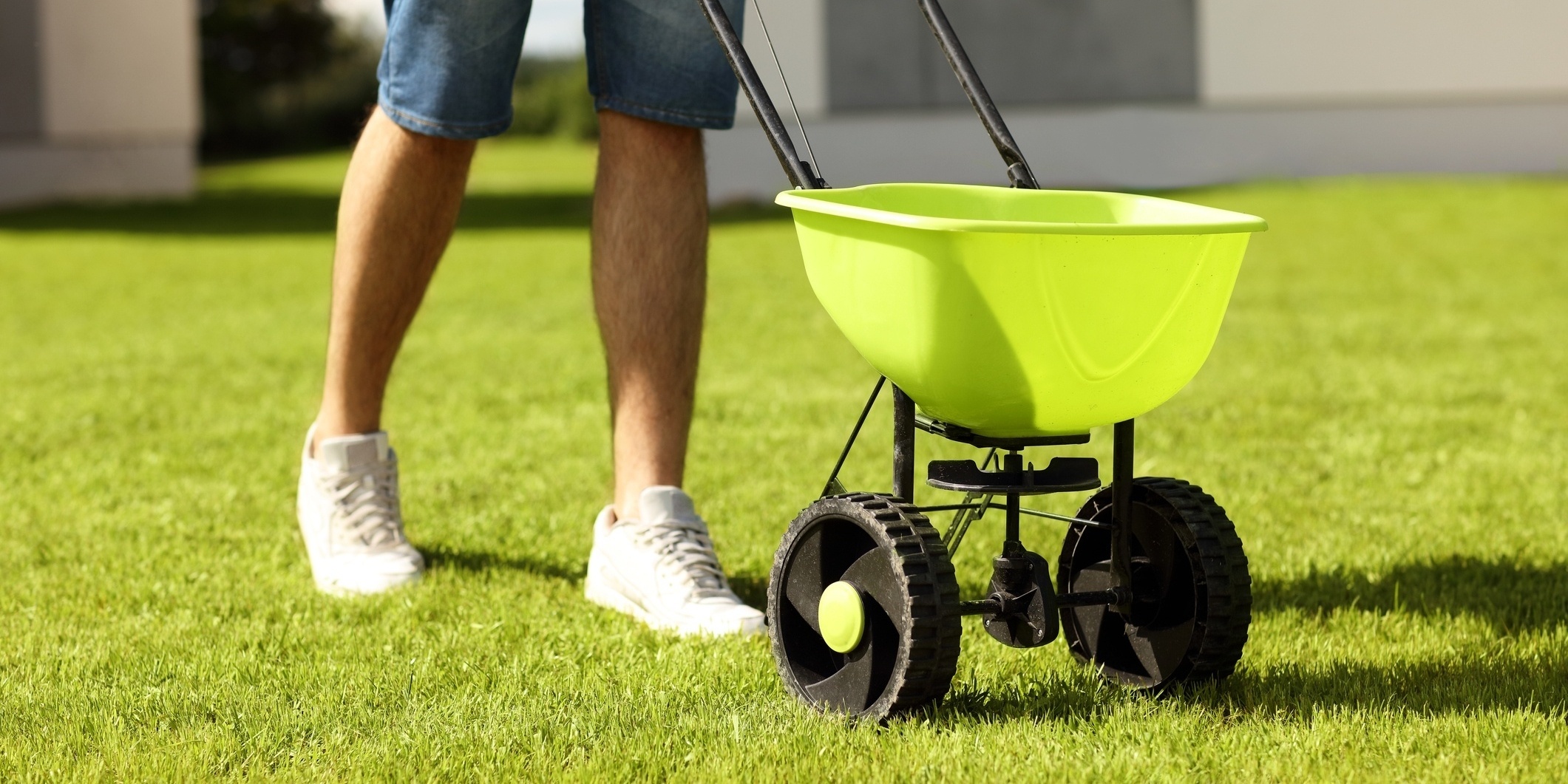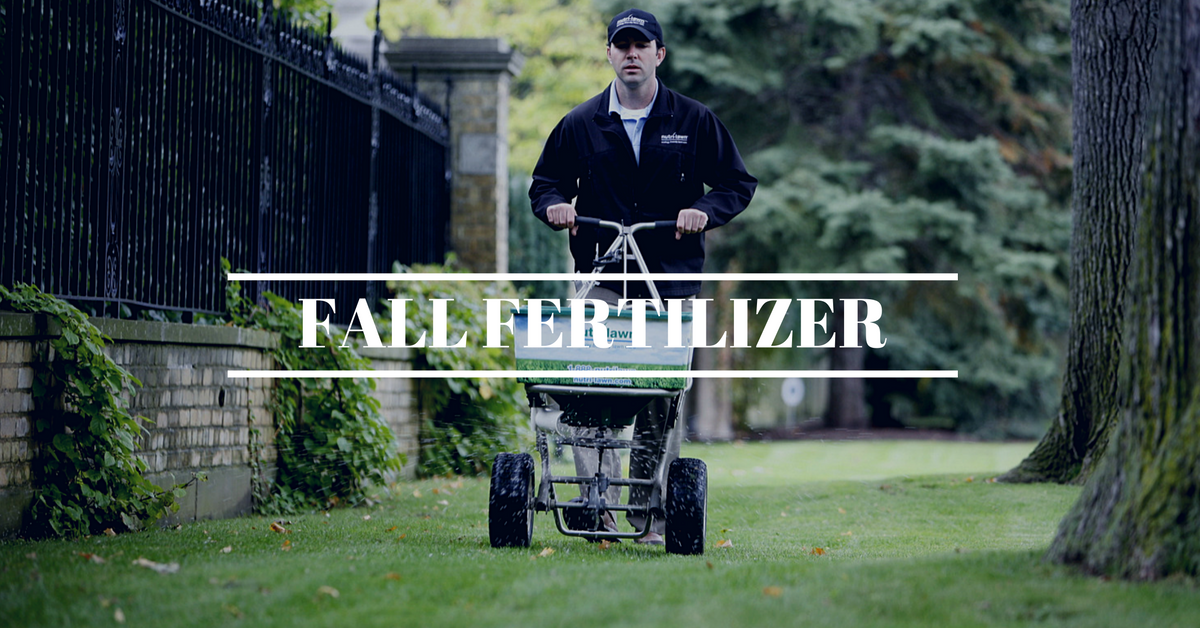
One of the single most important things you can do for your lawn is to provide it with the plant essential nutrients it requires to grow healthy. Balanced fertility ensures the lawn will stay green, thick, healthy, and robust, just the way we like it.
Fertilizing provides some of the best visual impacts with relatively minimal effort and expense. Fertilizing in the fall is very important in the overall process of the lawns fertility requirement and provides many benefits.
Fertilizer Benefits
Both early fall and late fall fertilizer applications provide direct benefits for the lawn including the following:
• Promotes deep rooting in late fall and early spring
• Prolongs dark green turf colour into early winter
• Ensures good winter survival
• Enhances the storage of carbohydrates
• Increases shoot density
• Provides early spring green up
Application Rate
Fertilizer must be applied equally and evenly across the lawn. It also must be applied at the correct rate based on the time of year and the plants requirement. In general, no more than 1 lb of Nitrogen per 1000 sq ft should be applied at one time. It is important to accurately measure the total treatment area and
only apply the required amount of fertilizer. More is not better.
Over fertilizing can create a number of problems including stripping, burning, and excessive growth resulting in a weaker plant that is susceptible to insects, disease, and winter kill.
Fertilizer Options

Fertilizer comes in 2 forms depending on the desired outcome. Quick release fertilizers are designed to provide quick plant response. These products typically last for a short time and require multiple timely applications throughout the season.
Slow release fertilizers are designed to release slowly and provide even feeding for long periods of time. These products are generally used over summer months and during the fall when immediate response is not required. Fewer applications are made further apart throughout the season. Some slow release technologies only require one application for the entire season.
Product Selection
Granular fertilizer is generally the product of choice for both do-it-yourself home owners and professional lawn care companies. This has a lot to do with convenience and ease of handling. Liquid fertilizer is seldom used by comparison.
Equipment
Having the right equipment to do the job makes a big difference. A rotary broadcast spreader is easy to use and most effective dropping the fertilizer from the hopper on a spinning impeller that throws fertilizer in 5–10 foot swath. This evenly distributes the fertilizer across the lawn and provides effective application coverage.

Application Technique
When it comes time to spread fertilizer, application technique couldn’t be more important. There are certainly more ways than one to effectively fertilize depending on the equipment being used. The most common technique is to fertilize in straight lines in a back and forth pattern across the lawn. Each pass should include an overlap to help avoid streaks and stripes. A perimeter pass is required around the edges to ensure application is even right to the edges.
For lawn care tips and tricks, follow us on Facebook or Instagram.








